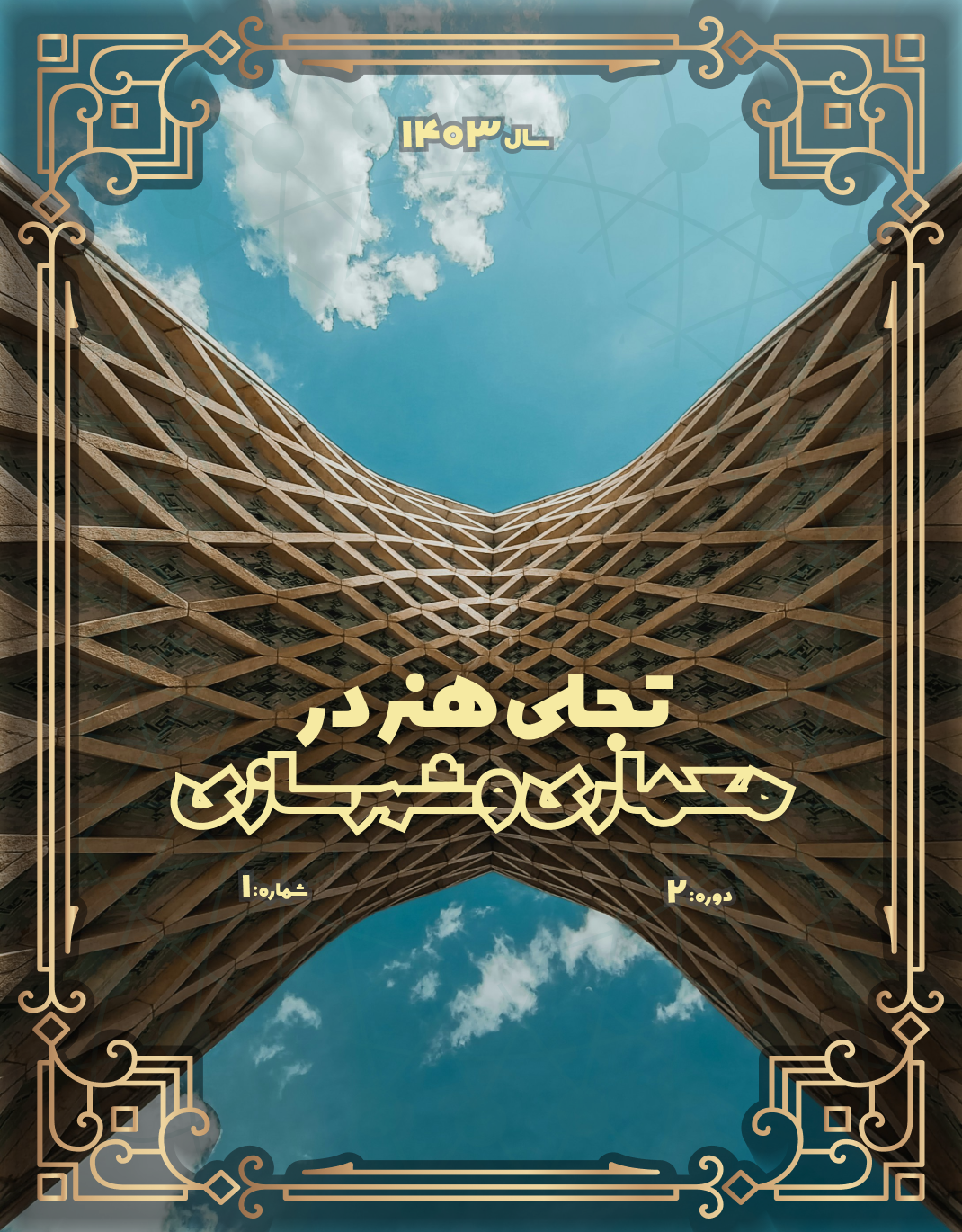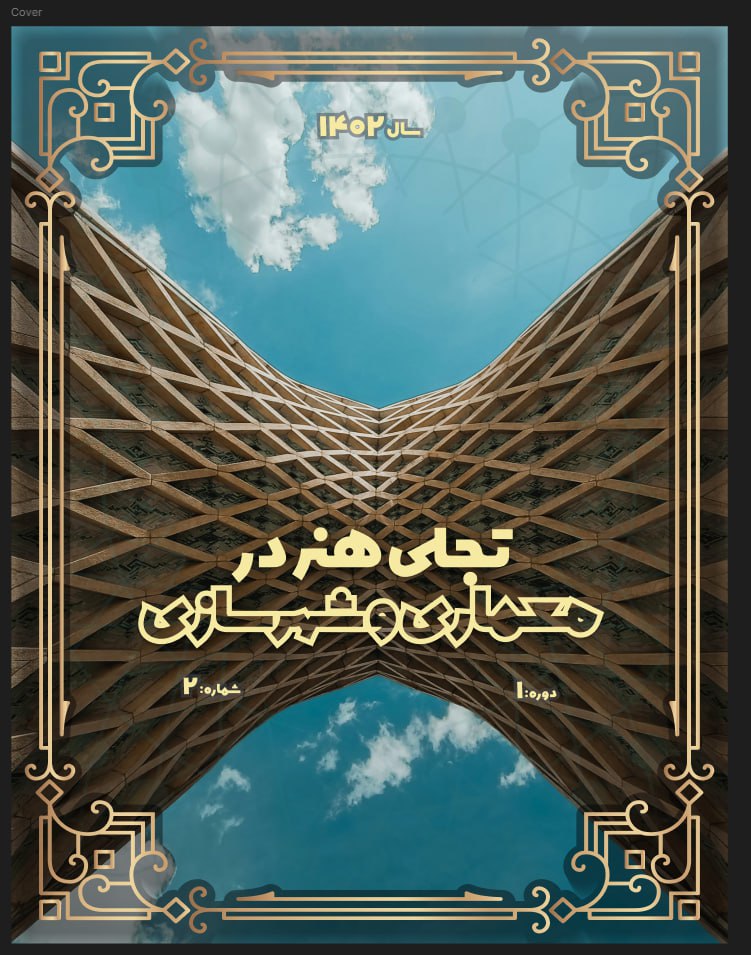Structural Discourse Analysis of the Painting "The Conquest of Tehran" and Its Role in the Reproduction of National Identity
Keywords:
“Fathe Tehran” painting, National identity, Constitutional Revolution, Visual elements and Structural discourseAbstract
History and culture constitute the true and life-giving spirit of any society, while art is regarded as the medium through which this spirit is manifested and objectified. In this light, the Constitutional Revolution, as one of the most prominent and significant structural transformations in the history and civil society of Iran, has, on one hand, left a distinctive impact on the art of that period, and on the other hand, has been represented and mirrored through the artistic expressions of the time. One of the most distinguished artistic works that aims to portray a segment of this historical-cultural event is the painting The Conquest of Tehran. This artwork not only creates meaning and value and conveys the dominant sociopolitical and cultural ideologies of the time through visual and structural elements, but also plays a crucial role in the reproduction of national identity and, consequently, in nation-building. Therefore, the primary objective of this study is to demonstrate how a visual artwork contributes to the reproduction of national identity through structural discourse analysis. Pursuing this goal, we have reached the important conclusion that The Conquest of Tehran, by constructing a coherent and unified structure within a visual discourse using visual elements, has successfully contributed to the propagation and expansion of the ideas and beliefs of the Constitutional Revolution in Iran and has fulfilled the process of national identity reproduction.
Downloads
References
1. Meskoub S. On the history of Qajar painting. Iran Nameh. 1999(67).
2. Aghalouei N. A brief review of Qajar painting and the introduction of a Qajar Bayaz war manuscript preserved in the Museum of Decorative Arts. Narrative History. 2018;3(11).
3. Ghaffari Namin MR. Realism in Qajar painting. Ketab-e Mah-e Honar. 2010(141).
4. Ajand Y. Qajar period painters. Golestan-e Honar Quarterly. 2007(9).
5. Hosseini Motlagh M. A study on the most common painting techniques during the Qajar era. Ketab-e Mah-e Honar. 2009(138).
6. Moeinoddini M. Examining the relationship between Fath-Ali Shah Qajar’s patronage of art and its political utilization. Political Science Journal. 2015;11(30).
7. Shahi MS. On the foundation of constitutionalism. 1 ed. Tehran: Negah-e Moaser Publishing; 2020.
8. Mirzaei Mehr AA. Kamal-ol-Molk: The perfection of landscape painting in the Qajar era. Khayal-e Sharqi. 2005(2).
9. Pakbaz R. The encyclopedia of art. 14 ed. Tehran: Farhang-e Moaser; 2014.
10. Read H. The philosophy of modern art. 3 ed. Tehran: Negah Publishing; 2008.
11. Asadi S. Qajar painting panels in the Sahebqaranieh Palace. 2020.
12. Abrahamian E. A history of modern Iran. 3 ed. Tehran: Ney Publishing; 2010.
13. Ghany C. Iran: The rise of Reza Khan, the fall of the Qajars, and the role of the British. 9 ed. Tehran: Niloufar Publishing; 2021.
14. Fazilatkhah H. Two centuries of turbulence. 1 ed. Tehran: Bahjat Publishing; 2024.
15. Niavaran Cultural-Historical Complex.
16. Pooke G, Newall D. Art history: The basics. 2 ed. Tehran: Honar-e Nevisandeh Publishing; 2019.
17. Delzendeh S. Visual developments of Iranian art. 4 ed. Tehran: Nazar Publishing; 2022.
18. Khalili N. The Iranian Constitutional Revolution. 6 ed. Tehran: Qoqnoos Publishing; 2022.
19. Pakbaz R. Iranian painting from ancient times to the present. 3 ed. Tehran: Zarrin & Samin; 2021.
20. Yassini SR. The influence of traditional arts on contemporary Iranian painting. 1 ed. Tehran: Research Institute of Culture, Art, and Communication; 2013.
21. Sharifzadeh SA. A history of miniature painting in Iran. 1 ed. Tehran: Art Bureau Publishing; 1996.
22. Amin Salmasi B, Mortezavi-Far M. Illustration: History, principles, basics, and techniques. 1 ed. Tehran: Fakhrakiya Publishing; 2016.
23. Delfani Arkesi P, Bani Ardalan E. The structure of perspective in Iranian miniature and Ibn al-Haytham’s theory of vision. Research in Art and Humanities. 2018;3(6):14.
Downloads
Published
Submitted
Revised
Accepted
Issue
Section
License
Copyright (c) 2024 Karoobeh ZareiDastgerdi; Majid Aslami (Author)

This work is licensed under a Creative Commons Attribution-NonCommercial 4.0 International License.










